- Home
- Prelims
- Mains
- Current Affairs
- Study Materials
- Test Series
14th Oct 2021
PEOPLES’ ASSESSMENT OF THE RTI REGIME IN INDIA - SATARK NAGRIK SANGATHAN (SNS)
According to an analysis by the Satark Nagrik Sangathan (SNS), a citizen's vigilance group, there is a huge backlog in processing Right to Information applications.
Highlights:




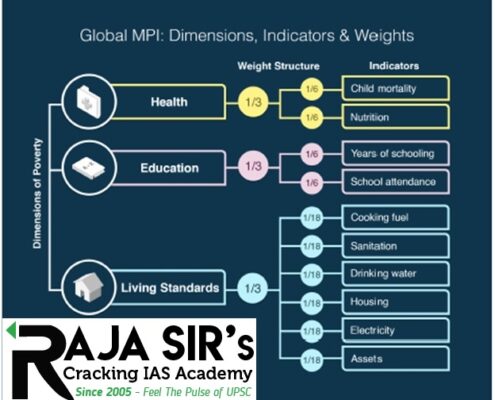 Worldwide, across 109 countries and 5.9 billion people:
Worldwide, across 109 countries and 5.9 billion people:


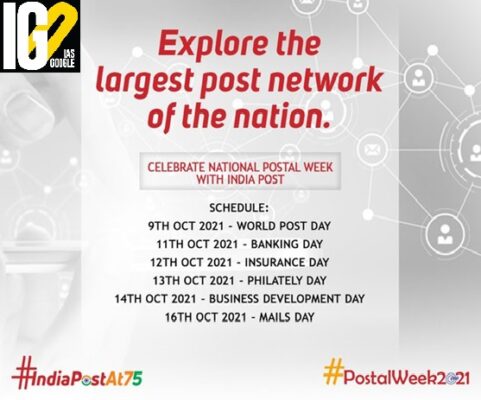


 The India context:
The India context:
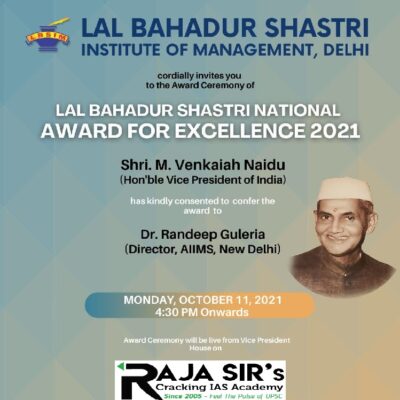
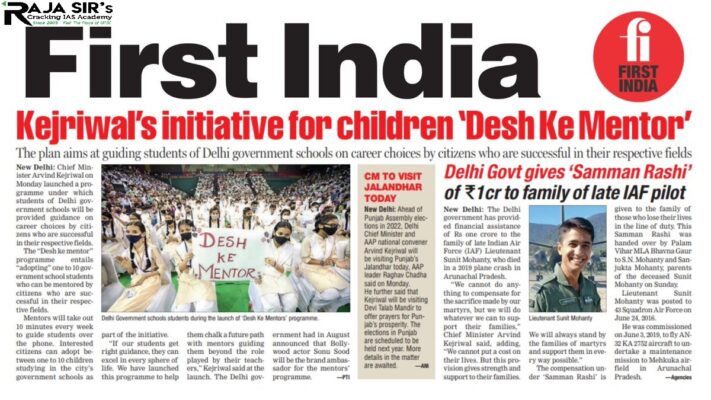

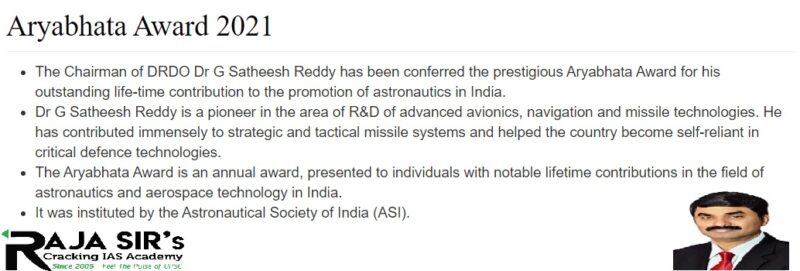

- Twelve State Information Commissions plus the Central Information Commission would need at least a year to dispose of their appeals, as the nationwide backlog has crossed 2.55 lakh cases.
- For Example: At the current rate of operations, a complaint filed under the Right to Information Act (RTI) in 2021 in Odisha would not be disposed of by the State’s Information Commission until 2028.
- The delays in disposing of cases are due to both shortage of personnel and inefficient operations.
- Right to Information Act came into force on October 12, 2005.
- Initiative by: Department of Personnel and Training, Ministry of Personnel, Public Grievances and Pensions.
- It is a big step towards making the citizens informed about the activities of the Government.
- The RTI related information is published on the web by various Public Authorities under the government of India as well as the State Governments.
- To empower the citizens, promote transparency and accountability in the working of the Government.
- To contain corruption, and make Indian democracy work for the people in real sense.
- It mandates timely response to citizen requests for government information.
- It provides a RTI Portal Gateway to the citizens for quick search of information on the details of first Appellate Authorities, PIOs etc. amongst others.
- Any citizen of India may request information from a "public authority" (Central or State Government), which is required to reply expeditiously or within thirty days.
- In case of matter involving a petitioner's life and liberty, the information has to be provided within 48 hours.
- Central Information Commission (CIC) – Chief Information commissioner who heads all the central departments and ministries- with their own public Information officers (PIO)s. CICs are directly under the President of India.
- State Information Commissions – State Public Information Officers or SPIOs head over all the state department and ministries. The SPIO office is directly under the corresponding State Governor.
- State and Central Information Commissions are independent bodies and Central Information Commission has no jurisdiction over the State Information Commission.

- There is low public awareness among the public, especially from the disadvantaged communities regarding how to exercise their rights contemplated under the Act.
- There are several constraints in implementation of RTI guidelines. Further, there is a non-availability of user guides, in some states.
- Lack of user guide results in hardship to information seekers to gather knowledge about the process for submitting a RTI request.
- Due to lack of infrastructure and adequate processes to comply with the RTI Act, the quality of information provided is very low.
- The information provided is either incomplete or lacks the substantial data and transparency.
- There is a delay of the Public Authority in providing information within 30-45 days once the complaint is filed.
- There is no centralized database of RTI applicants which results in delay in accurate and timely compilation.
- The right to information has been recognised as a Fundamental right under Part III of the Constitution by the Supreme Court in several cases.
- It protects the fundamental rights to Freedom of Expression and Speech under Article 19(1)(a) and Right to Life and Personal Liberty under Article 21.
- There are an estimated 40 lakh to 60 lakh RTI requests being filed every year.

- MBED will ensure that the cheapest generating resources across the country are dispatched to meet the overall system demand.
- It will be beneficial for both the distribution companies (DISCOMs) and the generators, resulting in significant savings for electricity consumers.
- The power demand by all states will be met through DISCOMs at the optimal price.
- MBED shall facilitate larger integration of variable renewable energy by enlarging the balancing area to the national level.
- It is an essential step in reforming electricity market operations and moving towards ‘One Nation, One Grid, One Frequency, One Price.’
- The implementation of MBED – Phase 1 will begin from April 1, 2022.
- The Central Electricity Regulatory Commission (CERC) will conduct trial runs to ensure the system runs smoothly.
- Interstate generation facilities will participate in the first phase, while other generation facilities will join voluntarily.
- Phase 1 would involve only the thermal fleet of Central Generating Stations. It would:
- Test the efficacy of MBED mechanism.
- Identify deficiencies or potential issues to be addressed prior to a nation-wide rollout.
- Familiarize all key stakeholders with the framework.
- Allow for necessary infrastructure and systems to be built out and tested before scale up.
- One Nation, One Grid refers to the integration of regional power grids to establish a National Grid. It was launched to improve India’s connectivity infrastructure and ensure availability of power to states at affordable rates.
- One Nation, One Grid, One Price is aimed at the uniform pricing and facilitation of efficiency and renewable energy integration.
- India has already attained the status of ‘One Nation, One Grid, One Frequency’ and there are no constraints in inter-regional transfer of power.
- Indian Power system for planning and operational purposes is divided into five regional grids.
- The integration of regional grids, and thereby establishment of National Grid, was conceptualized in early nineties.
- The initial inter-regional links were planned for exchange of operational surpluses amongst the regions.
- The National Grid is the high-voltage electricity network in mainland India, connecting power stations and major substations.
- It is owned, operated, and maintained by state-owned Power Grid Corporation of India.
- It is one of the largest operating synchronous grids in the world with 371.054 GW of installed power generation capacity as of 30 June 2020.
- Grid management on regional basis started in sixties.
- State grids were inter-connected to form regional grid and India was demarcated into 5 regions namely Northern, Eastern, Western, North Eastern and Southern region.
- In October 1991 North Eastern and Eastern grids were connected.
- In August 2006 North and East grids were interconnected.
- Thereby 4 regional grids Northern, Eastern, Western and North Eastern grids were synchronously connected forming central grid operating at one frequency.
- On 31st December 2013, Southern Region was connected to Central Grid in with the commissioning of 765kV Raichur-Solapur Transmission line thereby achieving ‘ONE NATION’- ‘ONE GRID’- ‘ONE FREQUENCY’.
- Synchronization of all regional grids will help in optimal utilisation of scarce natural resources by transfer of Power from resource centric regions to load centric regions.
- It will pave way for establishment of vibrant Electricity market facilitating trading of power across regions.
- The resolution emphasises “the rights to life, liberty and security of human rights defenders working in environmental matters, referred to as environmental human rights defenders.”
- If recognised by all, the right would the first of its kind in more than 70 years since the Universal Declaration of Human Rights was adopted by the UN General Assembly in 1948.

- The right to a clean environment was rooted in the 1972 Stockholm Declaration.
- Environmental defenders across the globe are subject to constant physical attacks, detentions, arrests, legal action and smear campaigns.
- Some 200 environmental defenders have been murdered in 2020 alone.
- The Agenda was presented by UN Secretary-General Antonio Guterres. The parties were called to pursue the 2020 Call to Action on Human Rights.
- The Human Rights Council is an inter-governmental body within the United Nations system responsible for the promotion and protection of all human rights around the globe.
- Established in: 2006 by UN General Assembly (UNGA)
- Aim: Strengthening the promotion and protection of human rights around the globe and for taking action on human rights violations around the globe.
- It replaced: United Nations Commission on Human Rights
- Total Members states: 47 (elected by the UNGA by a simple majority vote, through a secret ballot).
- Members terms: three-year terms with one-third of the members being renewed each year.
- Membership is based on: Equitable geographical distribution of seats according to the following regional breakdown:
- 13 African States
- 13 Asia-Pacific States
- 8 Latin American and Caribbean States
- 7 Western European and other States
- 6 Eastern European States
- Its decisions, resolutions, and recommendations are not legally binding.
- It reports directly to the Assembly’s 193 members.
- It receives substantive and technical support from the U.N. Office of the High Commissioner for Human Rights (OHCHR).
- It assessing the human rights records of all UN Member States every four and a half years through the Universal Periodic Review.
- It appoints independent experts known as “Special Procedures” to review human rights violations in specific countries.
- Examining complaints from victims of human rights violations or activist organizations on behalf of victims of human rights violations
- Promote human rights education and learning.
- Serve as a forum for dialogue on thematic issues on all human rights.
- At the International Conference held in Tunis in 1993, NHRIs established the International Coordinating Committee of NHRIs (ICC) with the aim to coordinate the activities of the NHRI network.
- In 2016, the ICC changed its name into Global Alliance of National Human Rights Institutions (GANHRI).
- GANHRI is incorporated as a legal entity under the Swiss law, and has a Bureau consisting of 16 “A status” NHRIs representing the four regions of GANHRI.
- General annual meetings of GANHRI, meetings of the GANHRI Bureau and of the Sub-Committee on Accreditation, as well as international conferences of GANHRI are held in cooperation with UN Human Rights in its capacity as the GANHRI secretariat.
 Worldwide, across 109 countries and 5.9 billion people:
Worldwide, across 109 countries and 5.9 billion people:
- 1.3 billion people are multidimensionally poor.
- About half (644 million) are children under age 18.
- Nearly 85 percent live in Sub-Saharan Africa (556 million) or South Asia (532 million).
- More than 67 percent live in middle-income countries.
- 1 billion each are exposed to solid cooking fuels, inadequate sanitation and substandard housing.
- 788 million live in a household with at least one undernourished person.
- 568 million lack improved drinking water within a 30-minute roundtrip walk.
- In India five out of six multidimensionally poor people are from lower tribes or castes.
- In India the Scheduled Tribe group accounts for 9.4 percent of the population and is the poorest: more than half—65 million of 129 million people.
- The global Multidimensional Poverty Index (MPI) measures acute multidimensional poverty across more than 100 developing countries.
- The global MPI complements the international $1.90 a day poverty rate.
- It measures each person’s deprivations across 10 indicators in three equally weighted dimensions: health, education and standard of living.
- Launched in 2010 by the Oxford Poverty and Human Development Initiative at the University of Oxford and the Human Development Report Office of the United Nations Development Programme, the global MPI is updated annually.
- The MPI ranges from 0 to 1, and higher values imply higher multidimensional poverty.
- At the same time, the programme was also launched in another four states namely, Uttarakhand, Odisha, Tripura and Chhattisgarh.

- River Ranching Programme is introduced as a special activity under Pradhan Mantri Matsya Sampada Yojana (PMMSY) for augmenting and enhancing fish production and productivity through expansion, intensification, diversification and productive utilisation of land and water.
- Nodal agency for implementing the programme: National Fisheries Development Board (NFDB), Hyderabad.
- It is programmed to:
- Address increased fish catch,
- Improve the livelihood of fishers and
- Maintain the cleanliness of the river as they feed on organic remnants.
- Uplift the depleted fish stock and to enhance the production of the ranched fish species.
- The Programme can achieve sustainable fisheries, reducing habitat degradation, conserving biodiversity, maximising socio-economic benefits and assessing ecosystem services.
- River ranching also ensures the up-gradation of the traditional fishery, ecosystem sustainability, trade and social protection of inland communities.
- Targeted three major river systems namely: the Ganges and its tributaries, Brahmaputra & Barak tributaries and Mahanadi rivers.
- Six major inland states focusing on the length of river belt namely Uttar Pradesh, Tripura, Chhattisgarh, Odisha, Uttarakhand and Bihar were selected along with targeted sites for releasing of fish fingerlings.
- States have followed the breeding protocol and standard measures that required for ranching the fingerlings of native fish species into the rivers.
- For river ranching, the suggested fingerling size is 80-100mm, as the fingerlings have reached the preferable size for Ranching Programme in the selected state.
- Hence, NFDB in collaboration with six states under DoF guidance launched the programme at the national level.
- Pradhan Mantri Matsya Sampada Yojana (PMMSY) is a flagship scheme for focused and sustainable development of fisheries sector in the country.
- It has an estimated investment of Rs. 20,050 crores for its implementation during a period of 5 years from FY 2020-21 to FY 2024-25 in all States/Union Territories, as a part of Aatma Nirbhar Bharat Package.

- Around 1.26 billion people across 30 countries are suffering from both extreme ecological risk and low levels of resilience.
- These countries are least likely to be able to mitigate and adapt to new ecological threats, leading to mass displacement.
- Data were assessed for threats relating to food risk, water risk, rapid population growth, temperature anomalies and natural disasters.
- Of the 178 countries in the ETR:
- 30 were identified as hotspots for having low levels of resilience and a medium to extremely high catastrophic threat score.
- 13 faced extremely high and 34 others faced high ecological threats.
- The most vulnerable countries are clustered in the Middle East and North Africa, sub-Saharan Africa and South Asia.
- Climate change will have an amplifying effect, causing further ecological degradation and pushing some countries through violent tipping points.
- Of the 15 countries most threatened, 9 are in sub-Saharan Africa, followed by 3 in south Asia.
- South Asia is the worst-placed, with water and food risks driving the average ETR score in the region.
- In sub-Saharan Africa, the score is influenced by high levels of population growth, which will place increased pressure on existing food and water scarcity.
- The region has the highest proportion (66 per cent) of its population suffering from food insecurity, highlighting its severity of water and food risks.
- Population growth and resource scarcity are intrinsically linked with conflict in sub-Saharan Africa.
- The report recommended a policy to combine health, food, water, refugee relief, finance, agricultural and business development into one integrated agency in high-risk areas and empowering local communities.
- 11 of 15 countries with the worst environmental threat scores are currently classified as being in conflict.
- Another four are classified as at high risk of substantial falls in peace, highlighting the relationship between resource degradation and conflict.
- Global food insecurity has increased by 44 per cent since 2014, affecting 30.4 per cent of the world's population in 2020, and is likely to rise further.
- From 1990 to 2020, a total of 10,320 natural disasters occurred globally. Flooding has been the most common natural disasters, accounting for 42 per cent of the total disaster count.
- In 2020, 177 countries and territories recorded a warmer average temperature compared to their historical average temperatures.
- 11 countries are projected to double their population between 2021 and 2050. They are all in sub-Saharan Africa.
- The three countries with the largest projected increases in population are Niger, Angola and Somalia, where the populations will increase by 161, 128 and 113 per cent, respectively.

- The Postal department celebrate the National Postal Week in the month of October, starting with the World Post Day on 9th October.
- Ministry of Culture has allocated the week from 11th to 17th October, 2021 to Department of Posts for celebration of Azadi ka Amrit Mahotsav (AKAM).
- It is celebrated every year on October 9 to mark the establishment of the Universal Postal Union (UPU) across the world.
- Theme: 'Innovate to Recover'.
- It is celebrated to create awareness about the role the postal sector plays in people's and businesses' lives and the contribution of the post to the social and economic development of nations.
- As part of the celebration, member nations are encouraged to participate in programme activities to create awareness of their Post's role on a national scale.
- It is celebrated in more than 150 countries across the globe as many nations observe the day as a working holiday.
- Many Posts use the event to promote new postal products and services while some use the day to reward their employees for good service.
- The Department of Posts (DoP) was established on 1st October 1854.
- It has been the backbone of the country’s communication and has played a crucial role in the country’s social economic development.
- It acts as an agent for Government of India in discharging services for citizens like Mahatma Gandhi National Rural Employment Guarantee Scheme (MGNREGS) wage disbursement and old age pension payments.
- With more than 1,55,000 post offices, the DoP has the most widely distributed postal network in the world.
- To provide mail parcel, money transfer, banking, insurance and retail services with speed and reliability.
- To provide services to the customers on value-for-money basis.
- To deliver social security services and to enable last mile connectivity as a Government of India platform.

- UPU is a specialized agency of the United Nations that coordinates postal policies among member nations, in addition to the worldwide postal system.
- It was established in 1874.
- Aim: To ensure a truly universal network of up-to-date products and services.
- Headquarters: Berne, Switzerland.
- With its 192 member countries, the UPU is the primary forum for cooperation between postal sector players.
- The UPU consists of 4 bodies

- David Card has been awarded the 2021 prize “for his empirical contributions to labour economics."
- Joshua D Angrist and Guido W Imbens got the prize “for their methodological contributions to the analysis of causal relationships."
- The prize winners will share a sum of 10 million Swedish crowns or $1.14 million.
- Card’s use of “natural experiments” is exemplary and his studies from the early 1990s challenged conventional wisdom, leading to new analyses and additional insights.
- For example: It is believed that raising minimum wages lead to lower employment.
- Card showed that increasing the minimum wage does not necessarily lead to fewer jobs.
- They are recognised for their methodological contributions to the analysis of causal relationships.
- They helped make sense of the data from such natural experiments.
- For example: Extending compulsory education by a year for one group of students may or may not affect everyone in the groups in the same way.
- Some students would have kept studying anyway and, for them, the value of education is often not representative of the entire group. So, is it possible to draw any conclusions about the effect of an extra year in school?
- In the mid-1990s, the duo solved this problem, demonstrating how precise conclusions about cause and effect can be drawn from natural experiments.
 The India context:
The India context:
- In India, it is commonly held that higher minimum wages will be counterproductive for workers.
- From Card’s work it can be stated that minimum wages can be increased in India without worrying about reducing employment.
- Minimum wages in India are very low with the national minimum wage at just Rs 180 per day.
- Since, India has a minimum wages code; it will extend to unorganised sector workers. So, enhancing minimum wages is important to improve incomes in the unorganised sector.
- ISpA aspire to fulfil the vision of a technologically-enabled Aatma Nirbhar Bharat.
- ISpA, an industry body comprises of both government and private companies to supplement Centre Government’s efforts in commercial space exploration and space-based communication.
- Its founding members include Bharti Airtel, Larson & Toubro, Nelco (Tata Group), OneWeb, Mapmyindia, Walchandnagar Industries and Alpha Design Technologies.
- It will act as an independent and “single-window” agency for enabling the opening up of the space sector to start-ups and the private sector.
- It will perform the role of policy advocacy and engage with stakeholders in the space sector, including New Space India Ltd (NSIL) and Indian National Space Promotion and Authorisation Centre (IN-SPACe).
- ISpA, is based on “four pillars” of space technology:
- Freedom to innovate in the private sector
- Making the government act as an enabler
- Preparing the next generation for the future of the space industry
- Ensuring the space sector is used as a common resource for the progress of humanity.
- To contribute towards the accelerated development of India’s space industry and making the country a leading player in this segment.
- To contribute to the Government of India’s vision of making India Atma Nirbhar and a global leader in the space arena.
- ISpA will undertake Policy Advocacy and engage with all stakeholders in Indian Space domain, including the Government and its Agencies, to make India self-reliant, technologically advanced and a leading player in the space arena.
- ISpA will be focused on capacity building and creation of space hubs as well as incubators in the country for private space start-ups.
- It will work in tandem with NSIL, a central public sector enterprise under the Department of Space (DOS).
- NSIL functions as the commercial arm for ISRO and secures launch contracts from customer satellites.
- It will enable the private sector companies, both global and domestic, to take interest in India’s space domain, with space-based communication networks coming to the fore.
- It will essential for broadband inclusion in remote areas and sparsely populated locations.
- It will bring India at par with US and EU in terms of satellite communications customers.
- OneWeb, a Bharti Enterprise, is building its initial constellation of 648 low-earth orbit satellites and has already put 322 satellites into orbit.
- StarLink and Amazon are also in discussions with the Indian government for a license to offer satellite-based internet services.
- SpaceX has a plan to create a network of 12,000 satellites of which over 1,300 are already sky-borne.
- Gaganyaan: First indigenous spacecraft to take 3 Indian astronauts into space for 5 to 7 days.
- Xposat- X-ray Polarimeter Satellite: Planned space observatory to study polarization of cosmic X-rays
- Aditya L-1: India’s first Solar Mission
- Chandrayaan 3: Mission repeat of Chandrayaan 2
- Shukrayaan: Mission to Venus

- The Lal Bahadur Shastri National Award is an annual prestigious award instituted from Lal Bahadur Shastri Institute of Management, Delhi.
- This consists of a cash award of 5,00,000 rupees plus a citation and a plaque.
- The award was started in 1999 and is provided to a business leader, management practitioner, public administrator, educator or institution builder for his/her sustained individual contributions for achievements of high professional order and excellence.
- This award is given by the President of India.
- The Award is presented on October 1 each year, the eve of the birth anniversary of Shri Lal Bahadur Shastri.

- Aim: To create a movement of youth volunteers who will act as guides for the students.
- Duration: Two to six months
- Duration with the first two months will be compulsory and the remaining four months as optional.
- The Mentors will guide and support 2-5 students studying in Delhi government schools.
- They can be from various professional backgrounds and between the age of 18-35.
- They will help the students in their overall development and personality development by sharing their knowledge, skills, and expertise in various fields.
- They will help children recognise their stress and lead a peaceful and calmer life in their toughest times
- They will learn about each other to have a better understanding of career options.

- Theme: ‘My Voice, Our Equal Future’
- In 2021, the Generation Equality Forum launched five-year commitments for bolder solutions to gender inequality as the world entered the second year of the COVID-19 pandemic.
- The pandemic has accelerated digital platforms for learning, earning, and connecting, while highlighting girls’ diverse digital realities.
- The gender digital divide is more than connectivity.
- Girls are less likely than boys to use and own devices, and gain access to tech-related skills and jobs.
- In 1995 at the World Conference on Women in China, the countries unanimously adopted the Declaration and Platform for Action towards girls’ rights.
- On December 19, 2011, United Nations General Assembly adopted Resolution 66/170 to declare October 11 as the International Day of the Girl Child, to recognize girls’ rights and the unique challenges girls face around the world.
- The International Day of the Girl Child focuses on the need to address the challenges girls face and to promote girls’ empowerment and the fulfilment of their human rights.

- Dr G Satheesh Reddy was awarded for his life-time contribution to the promotion of astronautics in India.
- He is a pioneer in the area of R&D of advanced avionics, navigation, and missile technologies.
- Has contributed immensely to strategic and tactical missile systems and helped the country become self-reliant in critical defence technologies.
- He set up mechanisms to establish robust defence development and production ecosystem.









 Latest News
Latest News
 General Studies
General Studies